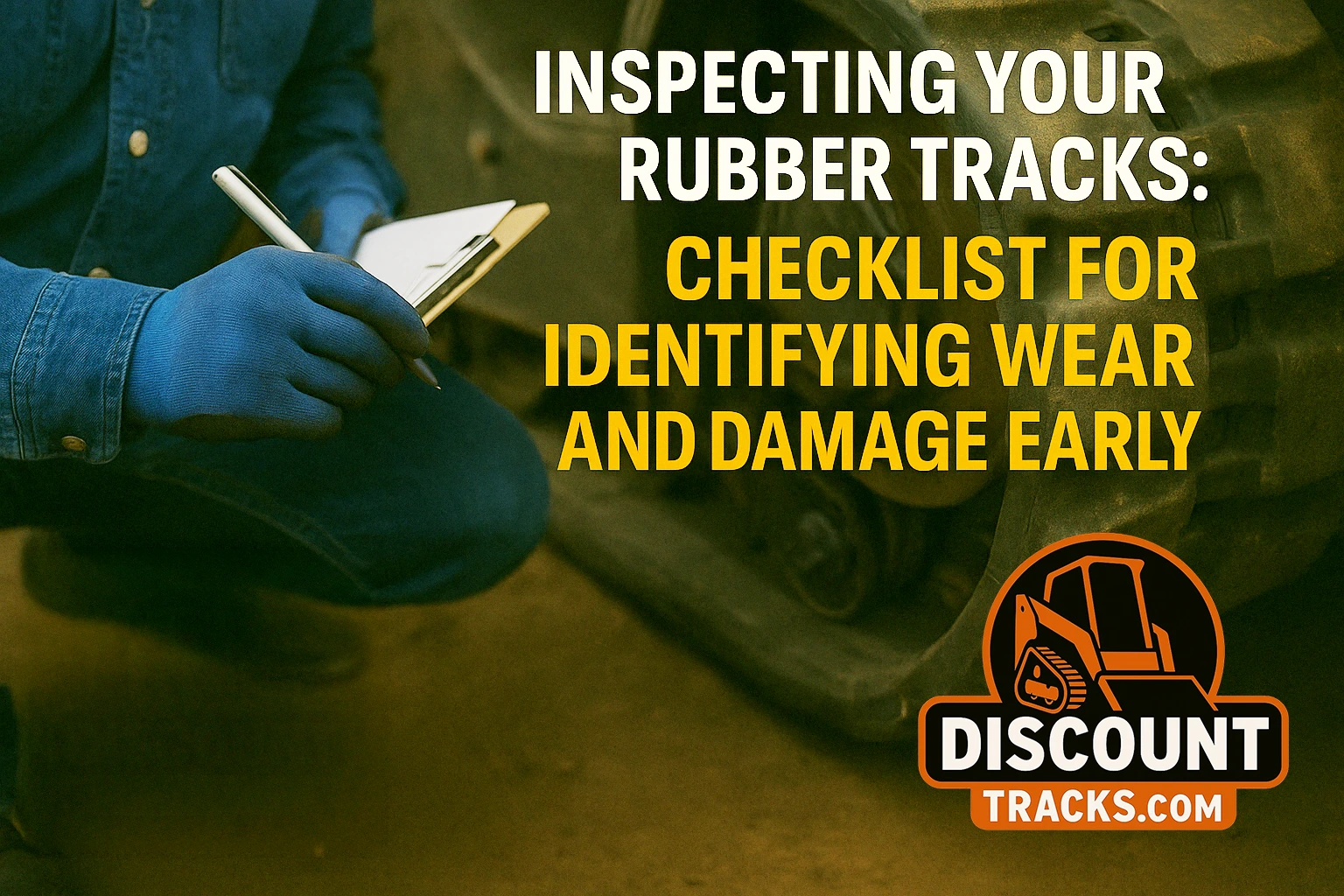Introduction
Your rubber tracks work hard every day, enduring harsh terrain, heavy loads, and challenging conditions. But even the toughest tracks wear down over time—and if you don’t catch the signs early, you could face costly repairs, dangerous failures, or unexpected downtime.
The good news? Regular rubber track inspection can help you identify track wear and damage before small issues become expensive problems. Whether you’re running a skid steer, CTL, or mini excavator, this guide provides a simple, effective checklist to help you stay ahead of maintenance and protect your investment.
Why Regular Track Inspection is Non-Negotiable
Staying proactive with rubber track inspections offers real, measurable benefits:
- Early Problem Detection: Spot cuts, cracks, chunking, or worn lugs before they worsen.
- Prevent Catastrophic Failure: Reduce the risk of de-tracking or total breakage during operation.
- Save Money: Address minor issues and plan replacements before they cause major undercarriage damage.
- Improve Safety: Faulty tracks can contribute to instability or operator injury.
- Extend Track Life: Regular attention leads to longer-lasting performance and lower cost-per-hour.
Your Essential Rubber Track Inspection Checklist
Perform this checklist daily for high-use equipment or at least weekly for standard operations. Always conduct inspections with the machine turned off, parked on level ground, and tracks clean for full visibility.
Check #1: Tread Lugs & Pattern Integrity
What to Look For:
- Missing tread lugs (chunking)
- Cracks or gouges at the base of lugs
- Uneven wear across tread width
- Excessively worn lugs
Why it Matters: Tread damage impacts traction and is often the first visible sign of wear. Uneven wear may also indicate misalignment or undercarriage issues.
Check #2: Track Body, Edges & Sidewalls
What to Look For:
- Cracks radiating from lugs or sidewalls
- Deep cuts into the rubber
- Rubber separating into layers (delamination)
- Damage along the outer edges
Why it Matters: These issues compromise overall track integrity and can spread quickly, especially in rough environments.
Check #3: Internal Drive Lugs (Embeds)
What to Look For:
- Cracks where drive lugs meet the track body
- Loose or missing lugs
- Uneven wear on contact surfaces
Why it Matters: Damaged drive lugs reduce engagement with the sprocket, leading to poor performance, wear acceleration, or de-tracking.
Check #4: Exposed Steel Cords
What to Look For:
- Any visible internal cords or wires
Why it Matters: Critical warning sign! If cords are exposed, the track is structurally compromised and should be replaced immediately.
Check #5: Track Tension (Quick Visual)
What to Look For:
- Tracks that look too loose or too tight
Why it Matters: Improper tension causes excessive wear and de-tracking. Use this check as a cue to perform a proper tension check. See our full tension guide →
Don’t Forget the Undercarriage – Your Track’s Partner!
Inspecting tracks means nothing if the undercarriage is wearing them out. While checking your tracks, take a quick look at:
- Sprocket Teeth: Look for sharp points or uneven wear.
- Rollers: Ensure they spin freely and don’t have flat spots.
- Idlers: Check for wobbling or excessive wear on flanges.
Why it Matters: Worn undercarriage parts will destroy new tracks quickly. Don’t let neglect waste your investment.
Making Inspection Routine
A few extra minutes before your shift can save hours of downtime:
- Daily: Quick walk-around check for visual damage or sagging tension.
- Weekly: Full checklist walkthrough with detailed look at each inspection point.
- Document: Keep notes on wear progression and recurring issues to spot patterns early.
Get the Most from Your Tracks with Discount Tracks
Good tracks deserve great care. Regular rubber track inspection helps you get the full value and lifespan from your investment—especially when you start with the durable, high-quality rubber tracks from Discount Tracks.
Need help identifying wear or knowing when it’s time to replace? Our track experts are ready to guide you every step of the way.
Conclusion
Regular rubber track inspection isn’t just smart—it’s essential. With this checklist, you can quickly identify wear and damage before it turns into costly repairs or unexpected failures.
Catch problems early, save money, and keep your machine running strong. When it’s time for replacements, choose Discount Tracks for durable, high-value rubber tracks you can rely on.
🔧 Ready for your next track upgrade? Explore our selection or contact our experts today!


